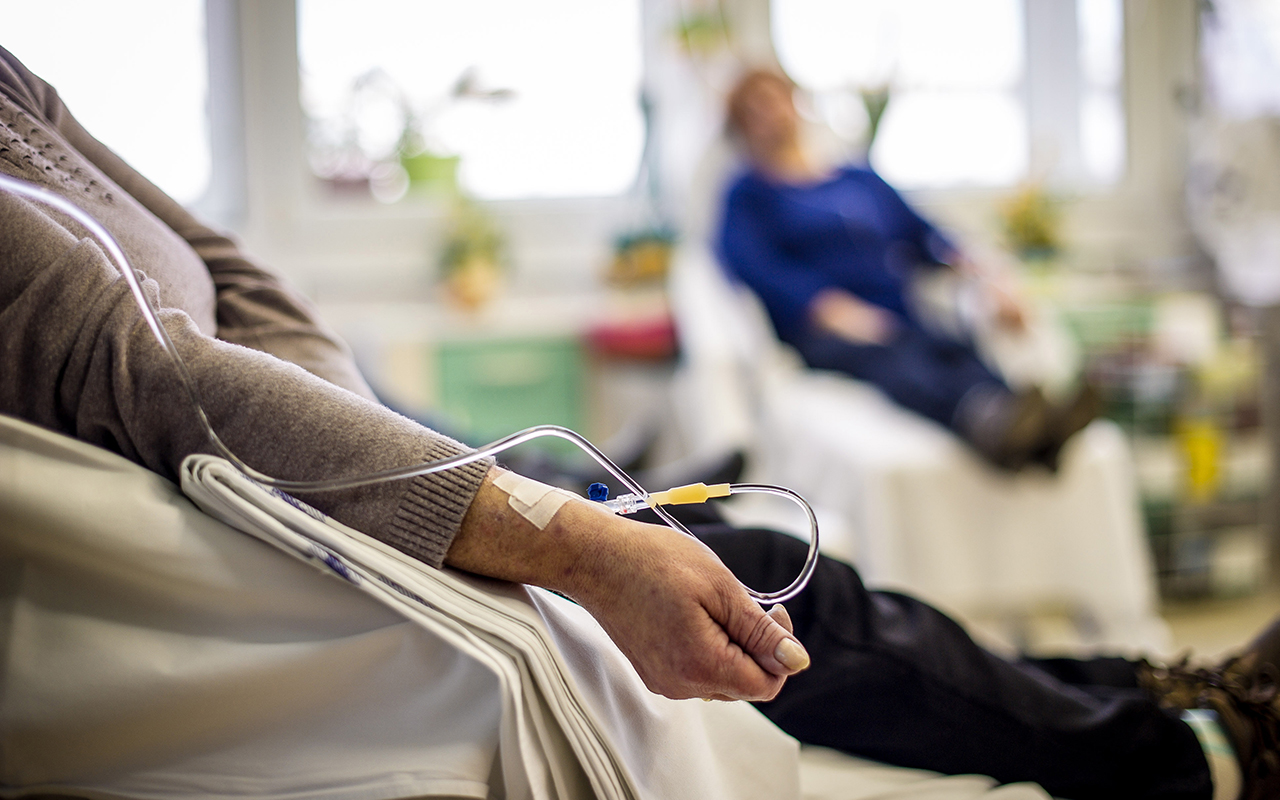Marked variation in out-of-pocket costs for cancer treatment
Patients with private health insurance are paying almost twice as much in out-of-pocket expenses for cancer treatment than those with no insurance, according to the authors of research published by the MJA. Researchers from the University of Western Australia have been following adults with colorectal, lung, prostate or breast cancer, confirmed by the WA Cancer Registry, who lived in four rural (Midwest, South West, Great Southern, Goldfields) and two outer metropolitan (Joondalup/Wanneroo and Rockingham/Peel) regions of WA. Between 1 April 2014 and 31 April 2017, eligible patients were invited to complete questionnaires requesting demographic, financial, and treatment information, including all costs during treatment. Participants living in outer metropolitan areas experienced higher costs than participants in rural areas. Ninety-eight per cent of outer metropolitan and 95% of rural participants were out-of-pocket and the amount they paid varied between $13 and $106 140. The majority of participants’ out-of-pocket costs were due to gap payments for medical costs such as surgery, tests and doctors’ appointments. “Among rural participants, mean out-of-pocket expenses were higher for men ($1988 v $1362 for women), for people with private health insurance ($2455 v $1103), and for people who were married ($2086 v $1297), had undergone surgery ($1990 v $1360), or had worked prior to being diagnosed with cancer ($2084 v $1298),” reported the authors, led by Professor Christobel Saunders. “Among outer metropolitan participants, mean out-of-pocket expenses were higher for men ($5217 v $2247), for people with private health insurance ($4670 v $2510), and for those who had undergone surgery ($5434 v $2157), worked prior to being diagnosed with cancer ($5471 v $2143), resided in areas of high socio-economic status ($4299 v $1859), or were receiving chemotherapy ($4286 v $2735). The higher out-of-pocket expenses for people with private health insurance or undergoing surgery indicate the importance of health care funding arrangements and the magnitude of the costs borne by patients,” Saunders and colleagues wrote. “The marked variation in out-of-pocket expenses … highlights the need for easily accessible information about services, medical costs, and gap payments for all health care services. Problems that still need attention in the unregulated private fee-setting environment in Australia include price discrimination in some specialist sectors. Bundles of care for cancer treatment that would allow patients and their families to better understand and plan for expenses should be explored,” they concluded.
Presymptomatic SARS-CoV-2 infections and transmission in a skilled nursing facility
From the NEJM: “We conducted two serial point-prevalence surveys, 1 week apart, in which assenting residents of [a skilled nursing] facility underwent nasopharyngeal and oropharyngeal testing for [severe acute respiratory syndrome coronavirus 2 (SARS-CoV-2)]. Asymptomatic residents who tested positive were reassessed 7 days later. Twenty-three days after the first positive test result in a resident at this skilled nursing facility, 57 of 89 residents (64%) tested positive for SARS-CoV-2 [either during the point-prevalence surveys, clinical evaluation, or post mortem examination]. Among 76 residents who participated in point-prevalence surveys, 48 (63%) tested positive. Of these 48 residents, 27 (56%) were asymptomatic at the time of testing; 24 subsequently developed symptoms (median time to onset, 4 days). Samples from these 24 presymptomatic residents had a median [real-time reverse-transcriptase polymerase chain reaction] cycle threshold value of 23.1, and viable virus was recovered from 17 residents. As of 3 April [2020], of the 57 residents with SARS-CoV-2 infection, 11 had been hospitalized (3 in the intensive care unit) and 15 had died (mortality, 26%). Of the 34 residents whose specimens were sequenced, 27 (79%) had sequences that fit into two clusters with a difference of one nucleotide. Conclusion: Rapid and widespread transmission of SARS-CoV-2 was demonstrated in this skilled nursing facility. More than half of residents with positive test results were asymptomatic at the time of testing and most likely contributed to transmission. Infection-control strategies focused solely on symptomatic residents were not sufficient to prevent transmission after SARS-CoV-2 introduction into this facility.” Available, open access, at https://www.nejm.org/doi/full/10.1056/NEJMoa2008457
Moving PPE into the community: face shields and containment of COVID-19
From JAMA: “The Infectious Diseases Society of America (IDSA) has included societal use of [personal protective equipment (PPE)], such as masks and face shields, in its recommendations for easing restrictions. To preserve medical masks for health care facilities, the Centers for Disease Control and Prevention has recommended that all persons wear a cloth mask in public for source control. Cloth masks have been shown to be less effective than medical masks for prevention of communicable respiratory illnesses, although in vitro testing suggests that cloth masks provide some filtration of virus-sized aerosol particles. Face shields may provide a better option. The [coronavirus disease 2019 (COVID-19)] pandemic arrived swiftly and found many countries unprepared. Even highly prepared countries are now facing second-wave outbreaks that have forced implementation of extreme social distancing measures. To minimize the medical and economic consequences, it is important to rapidly assess and adopt a containment intervention bundle that drives transmissibility to manageable levels. Face shields, which can be quickly and affordably produced and distributed, should be included as part of strategies to safely and significantly reduce transmission in the community setting. Now is the time for adoption of this practical intervention.” Available, open access at https://jamanetwork.com/journals/jama/fullarticle/2765525

 more_vert
more_vert